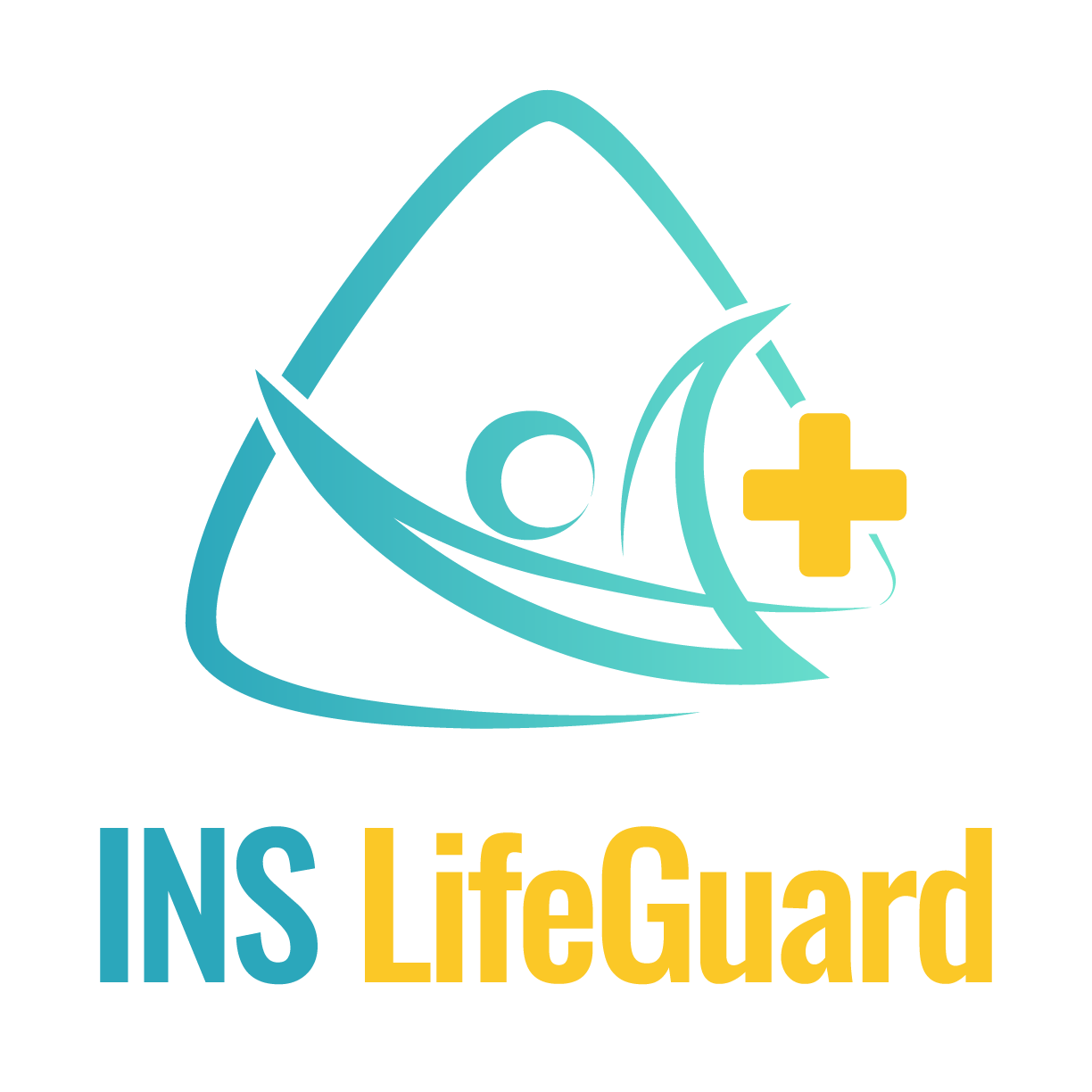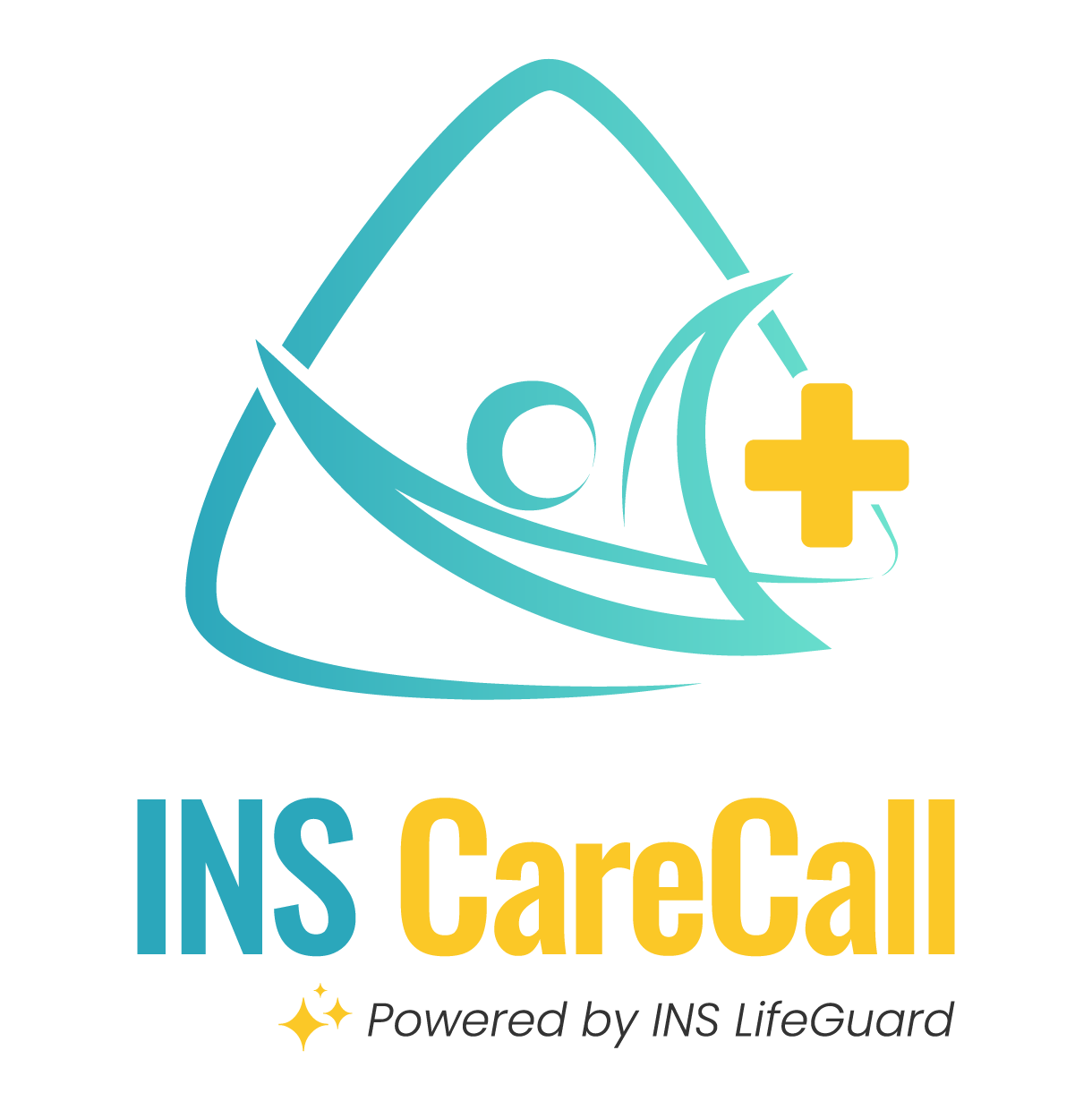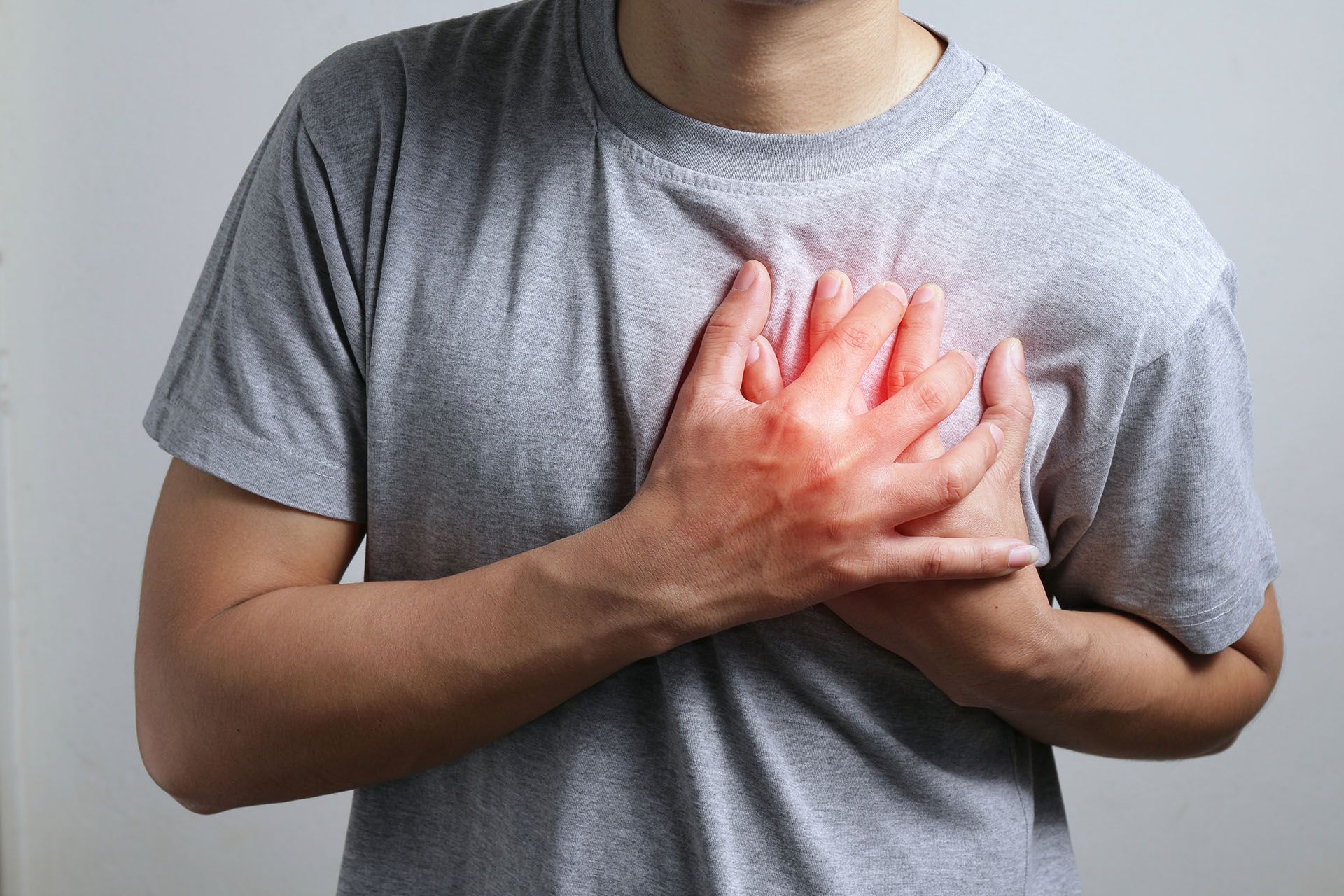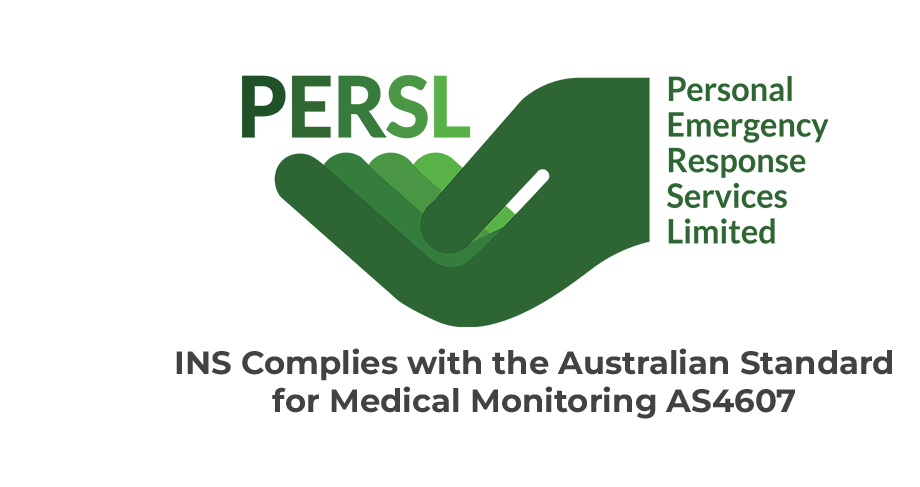INS LifeGuard
Living with Parkinson's Disease: Causes, Symptoms, and How to Manage It

Over 150,000 Australians are currently living with Parkinson’s disease, a number that continues to grow as 50 new diagnoses are made every day. This chronic, progressive condition has a profound impact on the lives of those affected and their loved ones. Despite the challenges associated with having Parkinson’s disease, with the right support and tools, it’s possible for individuals to maintain independence and quality of life. Understanding Parkinson’s disease is the first step in managing its effects and finding ways to live well with the condition.
What is Parkinson's Disease?
Parkinson's disease is a neurodegenerative disorder that primarily affects the motor system. It occurs when the brain cells responsible for producing dopamine — a chemical messenger that plays a vital role in controlling movement — begin to deteriorate and die. This decline in dopamine levels leads to the hallmark symptoms of Parkinson’s, such as tremors, stiffness, and slowness of movement.
The disease is chronic, meaning it persists over a long period, and progressive, indicating that symptoms worsen over time. Although it is more commonly diagnosed in older adults, Parkinson's can affect younger people, known as Young-Onset Parkinson's. The condition is diverse, affecting each individual differently, with a range of symptoms that may vary in severity and progression.
Causes of Parkinson's Disease
The exact cause of Parkinson’s disease remains unknown, but there are several factors that experts believe to be contributing to its development:
Genetic Factors
Research has identified certain genetic mutations linked to Parkinson’s, particularly in cases where the disease appears to run in families. However, these genetic forms account for a small percentage of cases.
Environmental Factors
Exposure to toxins, such as pesticides and heavy metals, has been associated with an increased risk of Parkinson’s. Prolonged exposure to certain chemicals can potentially damage dopamine-producing neurons in the brain.
Age
The risk of developing Parkinson’s increases with age, with most cases occurring after the age of 60. However, aging itself is not a cause, but it is a significant risk factor.
Oxidative Stress and Mitochondrial Dysfunction
Theories suggest that cellular damage caused by free radicals, known as oxidative stress, and problems with cellular energy production in mitochondria may contribute to the degeneration of dopamine-producing neurons.
Symptoms of Parkinson's Disease
Parkinson’s disease presents a wide range of symptoms that can be broadly categorised into motor and non-motor symptoms. These symptoms often begin gradually and may worsen over time.
Tremors
Involuntary shaking or trembling, usually starting in the hands or fingers. This is often one of the earliest signs of Parkinson’s and tends to occur at rest.
Bradykinesia
Slowness of movement. Simple tasks are more difficult to execute. This symptom can lead to a distinctive shuffling walk and difficulty initiating movement.
Muscle Rigidity
Stiffness in the limbs and neck, causing discomfort and limiting the range of motion. This can result in a stooped posture and reduced facial expressions.
Postural Instability
Impaired balance and coordination, which increases the risk of falls. People with Parkinson’s may find it challenging to maintain their balance, especially when turning or pivoting.
Non-Motor Symptoms
These include cognitive changes, mood disorders such as depression and anxiety, sleep disturbances, fatigue, and autonomic dysfunction (e.g., constipation, urinary problems, and blood pressure changes).
Treatment Options for Parkinson's Disease
While there is currently no cure for Parkinson’s disease, various treatments are available to manage its symptoms and improve the quality of life:
Medications
The most common treatment involves medications that increase dopamine levels or mimic its effects on the brain. Levodopa, dopamine agonists, and MAO-B inhibitors are frequently prescribed to help manage motor symptoms.
Surgical Options
For those with advanced Parkinson’s who do not respond adequately to medication, surgical options like
Deep Brain Stimulation (DBS) can be considered. DBS involves implanting electrodes in specific brain areas to regulate abnormal brain activity.
Physical Therapy
Exercise and physical therapy can help maintain mobility, balance, and overall fitness. Therapists may also recommend exercises to improve flexibility and strength.
Occupational Therapy
This focuses on adapting daily activities to enhance independence and safety. It may involve strategies to manage tremors and maintain fine motor skills.
Speech Therapy
Since Parkinson’s can affect speech and swallowing, speech therapy is crucial to maintain communication skills and prevent complications related to swallowing difficulties.
Supportive Therapies
These include complementary therapies such as acupuncture, massage, and yoga, which may help relieve symptoms and improve wellbeing.
Symptoms and Dangers of Parkinson's Disease
Having a better understanding of the symptoms and dangers of Parkinson’s disease can be beneficial for those living with the condition, as well as their loved ones. Our free resource provides a detailed overview of the most common symptoms, potential complications, and effective ways to manage risks. Download it today to gain valuable insights about the disease.
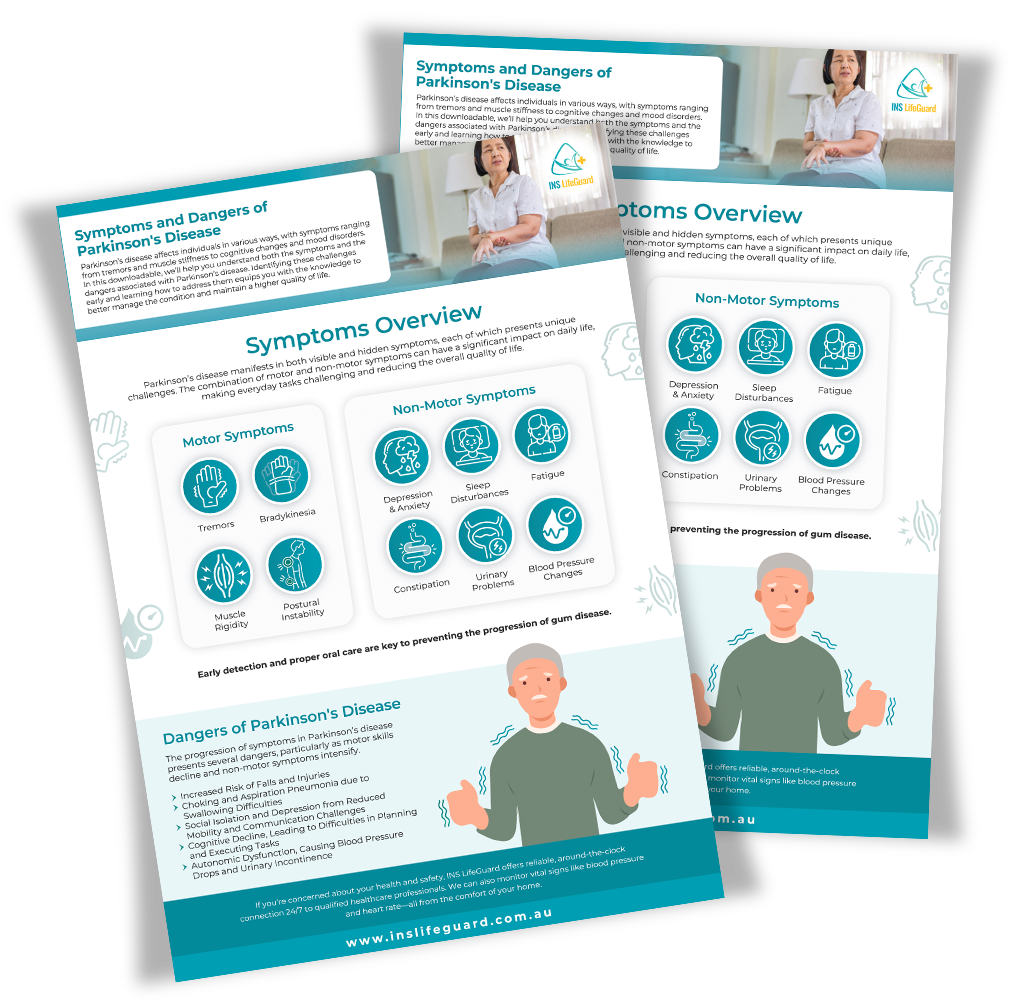
How Medical Alarms Provide Peace of Mind
Living with Parkinson’s disease can be an unpredictable journey due to the symptoms fluctuating throughout the day. This inherent unpredictability can cause anxiety, especially for those who live alone.
INS LifeGuard’s personal alarm systems offer a critical layer of security by providing immediate access to qualified nurses during sudden health issues. Whether it's a fall due to postural instability or an unexpected choking incident, our solutions ensure that help is only a button press away.
Here are some features of our personal alarms that are relevant to anyone with Parkinson’s disease:
24/7 Access to Expert Care
Living with Parkinson’s can mean dealing with sudden and unexpected health issues. Our personal alarm systems connect users to qualified nurses 24/7. This ensures that expert care is always available when it's needed most. Whether it’s managing a fall or responding to a sudden choking episode, having round-the-clock support brings peace of mind.
GPS Tracking
For those with Parkinson’s, maintaining independence is important for dignity and wellbeing. It, however, comes with risks. Our personal alarms feature GPS tracking which allows users to go about their daily lives with confidence. If a user becomes disoriented or needs assistance as a result of their Parkinson’s, their exact location can be quickly identified so timely help can be delivered no matter where they are.
Geofence Alerts
Geofence alerts add an extra layer of safety for individuals with Parkinson’s. This feature allows users to set predefined boundaries. If these are crossed, an alert is triggered, notifying caregivers or loved ones immediately. This is particularly useful for those
prone to confusion or wandering, providing reassurance that help will be on hand if needed.
Fall Detection
Falls are a common risk for people with Parkinson’s due to balance issues and muscle stiffness. Our personal alarms are equipped with fall detection technology, which automatically alerts our response centre if a fall is detected. This ensures that help is dispatched quickly, even if the user is unable to press the alarm button themselves.
Conclusion
There’s no doubt that Parkinson’s disease is a condition that presents numerous challenges to whoever has it, but understanding its causes, symptoms, and treatments can empower those affected to manage their condition effectively.
With the right support systems in place, including INS LifeGuard’s medical alarms, it becomes more possible for individuals to maintain their safety and independence. While there is currently no cure, advances in medical treatments and assistive technologies continue to improve the lives of those living with Parkinson’s. This means there’s hope and reassurance for a better tomorrow.

About
INS LifeGuard is the only 24/7 nurse on-call personal and medical monitoring in Australia. We provide monitoring technology for both in the home and on the go and can also monitor other provider's equipment. Our services are suitable for anyone wanting support to stay independent such as the elderly, those with medical conditions and disabilities plus enhancing safety and security for lone workers.
